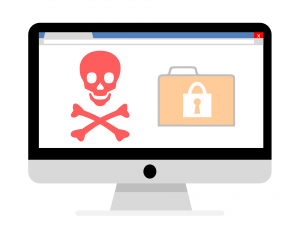From massive data breaches at Equifax and Yahoo, to sophisticated ransomware attacks on corporate and civil infrastructures, each year there are high profile cyber security disasters. For casual Internet users and small businesses alike, these well-publicized incidents have served as a glaring reminder that nobody can afford to take their data security for granted anymore.
In an effort to penetrate secure networks, modern cyber criminals are widening their sights to target individuals and organizations of all types and sizes. In this increasing dangerous digital environment, unprepared computer users can easily find themselves victimized by new scams and cyber attacks.
Proactive security measures are required to protect against such incidents, and the first step towards implementing these safeguards is arming yourself with the right information. With that goal in mind, we have prepared this list of definitions to help you understand some commonplace threats to your computer systems.

Viruses
Any self-replicating software program that continues to duplicate on connected devices is considered to be a virus, much like biological viruses these programs infect other users easily if transmitted. Viruses are most commonly transferred through storage devices like USB drives, or virtually through email attachments. Generally, a virus will require you to open the infected executable to begin the replication process.
Viruses can cause a range of issues for users. They can be used to corrupt and modify files, disrupt normal system processes, or simply fill up disk space indefinitely. Once a virus has infected your computer, all traces of it will need to be removed in order to stop the spread of infection.
Malware
Malware is a catchall term for any malicious software; everything from viruses to adware and Trojan horses can fall underneath the banner of malware. To qualify as malware, programs must be used to perform some illegitimate action, whether this is to steal your data, damage your computer systems or monitor communications on your network.
While the vast majority of malware require user intervention for initiation (opening an infected email attachment), there are many that target existing vulnerabilities in operating systems, software and computer networks. These pieces of malware can be used to attack your system without any action on your part.
Adware
As you might have guessed by the name, adware creates unwanted pop-up advertisements, either in your browser window or on the desktop itself, this software can also be used to monitor and track your browsing habits. These advertisements are used to generate revenue, much like TV, radio or print advertising. Generally, adware is attached alongside legitimate software and applications.
In most cases adware can seem innocuous enough although it can be extremely frustrating if pop-up advertisements cannot be closed or disabled by the user. However, while adware may not cause any serious harm to your computer, it will slow down your computer processer, as well as your Internet speeds. In rare cases, adware may also come equipped with key logging software, which can be used to steal your passwords and monitor your Internet communications.
Sometimes, clicking on an ad that you see on a website may also invoke adware. Most ad networks monitor the advertisements they load into their networks before they display them on publishers’ websites. However, some slip through the cracks and may contain malicious links.
Trojans
Much like the eponymous Trojan horse of Greek mythology, Trojan viruses are used to create backdoor access points for malicious software, and unauthorized users on your computer. Trojan viruses are generally hidden inside useful programs that computer users want to download. Once the decoy program is installed or run, the Trojan is activated.
The backdoor access points created by these viruses can be used for a whole host of attacks. At the low end of the scale, hackers may be content with creating pop-ups on your computer, and changing your desktop background. But if you’re unlucky enough to be targeted by a cyber criminal, then your files may be deleted or altered, and your sensitive data stolen.
Because most Trojans require an Internet connection to function properly, your best response to an infection is disconnecting from the Internet. You must then take all necessary steps to remove the virus before connecting to the Internet again.
Looking for More Expert Advice?
We can help your business enhance network security, keep your systems updated with the latest patches, increase productivity, and save thousands of dollars in IT investment. Contact us now to find out how you can get these benefits today!